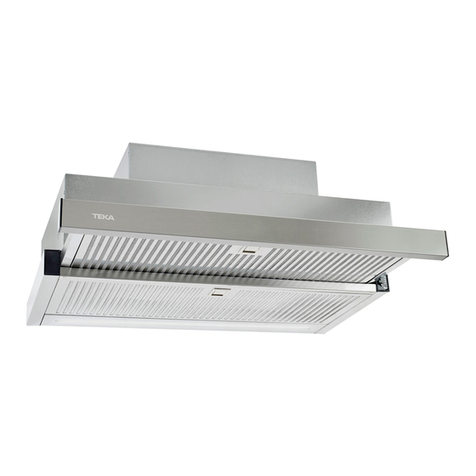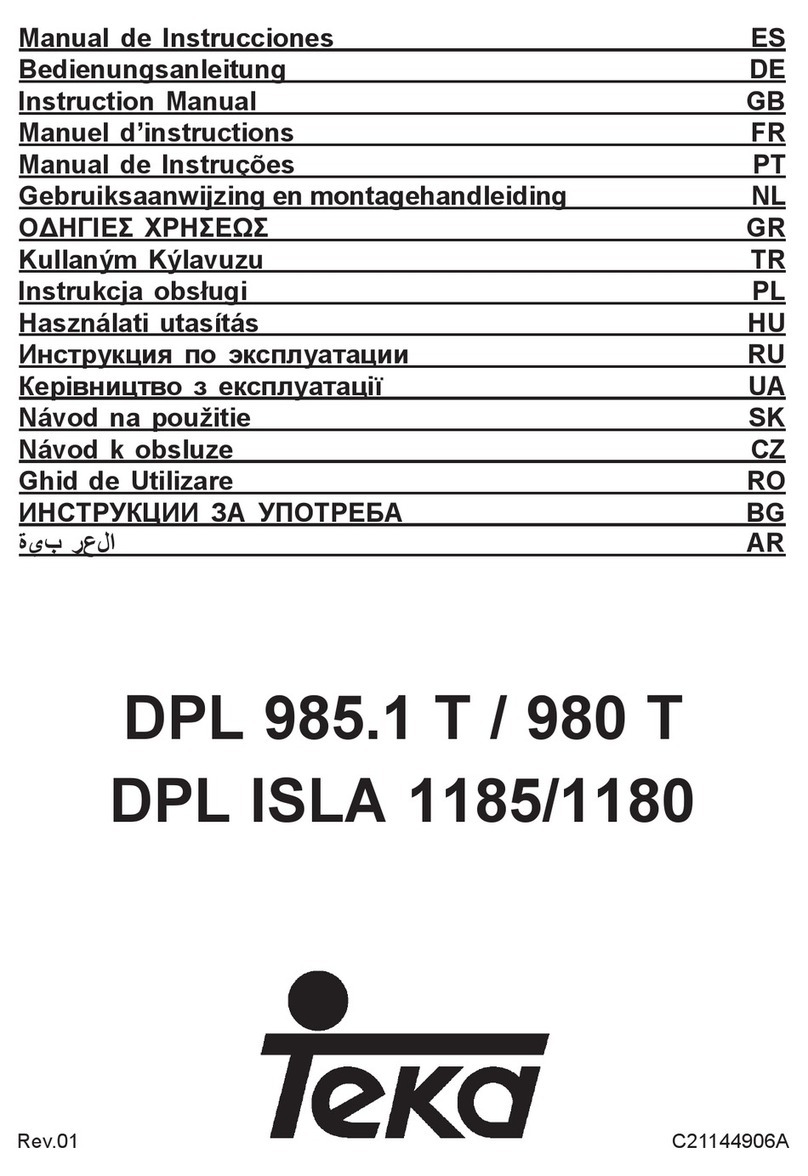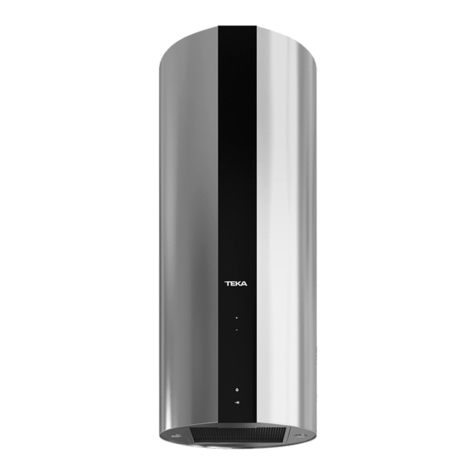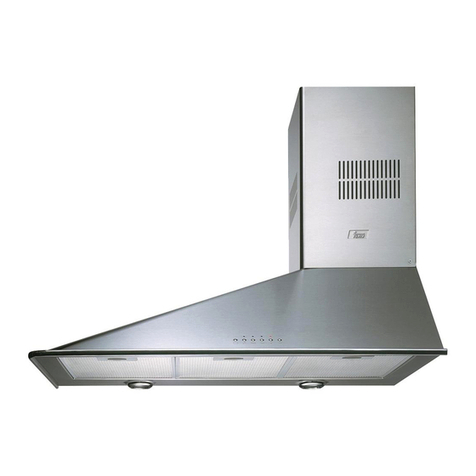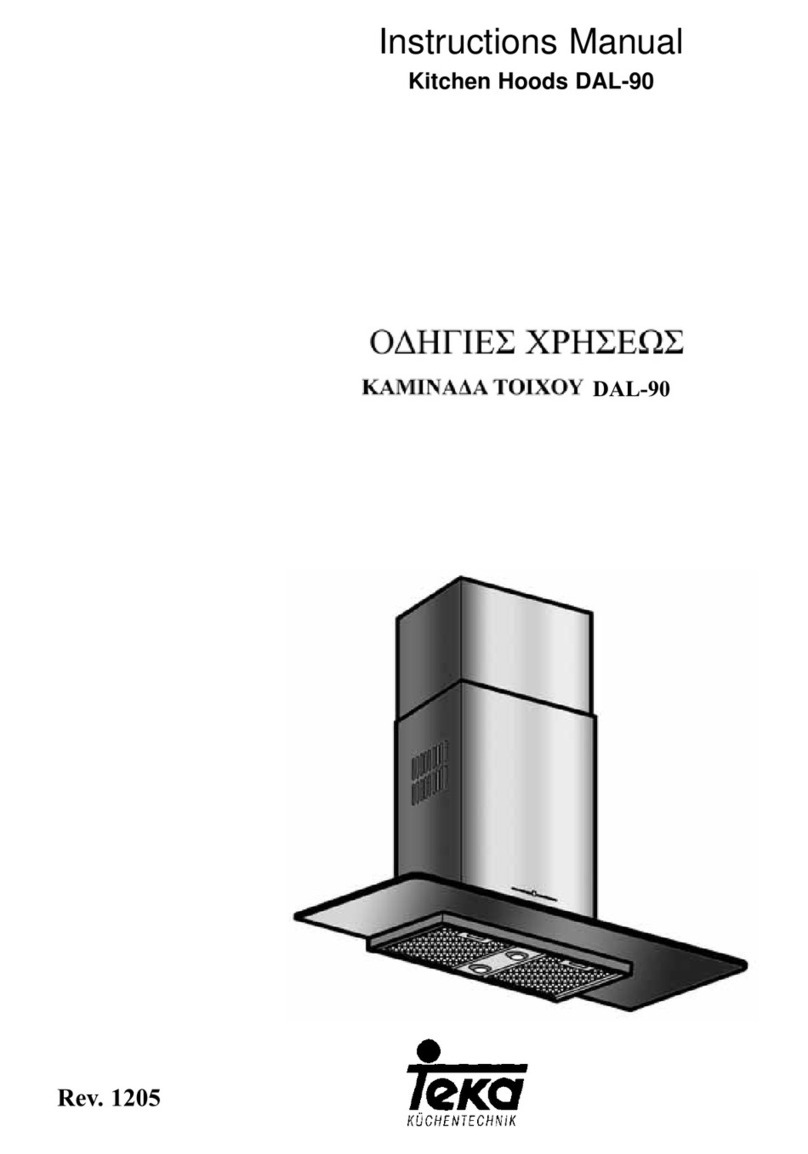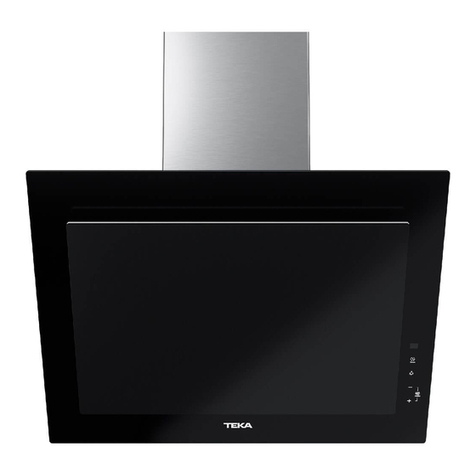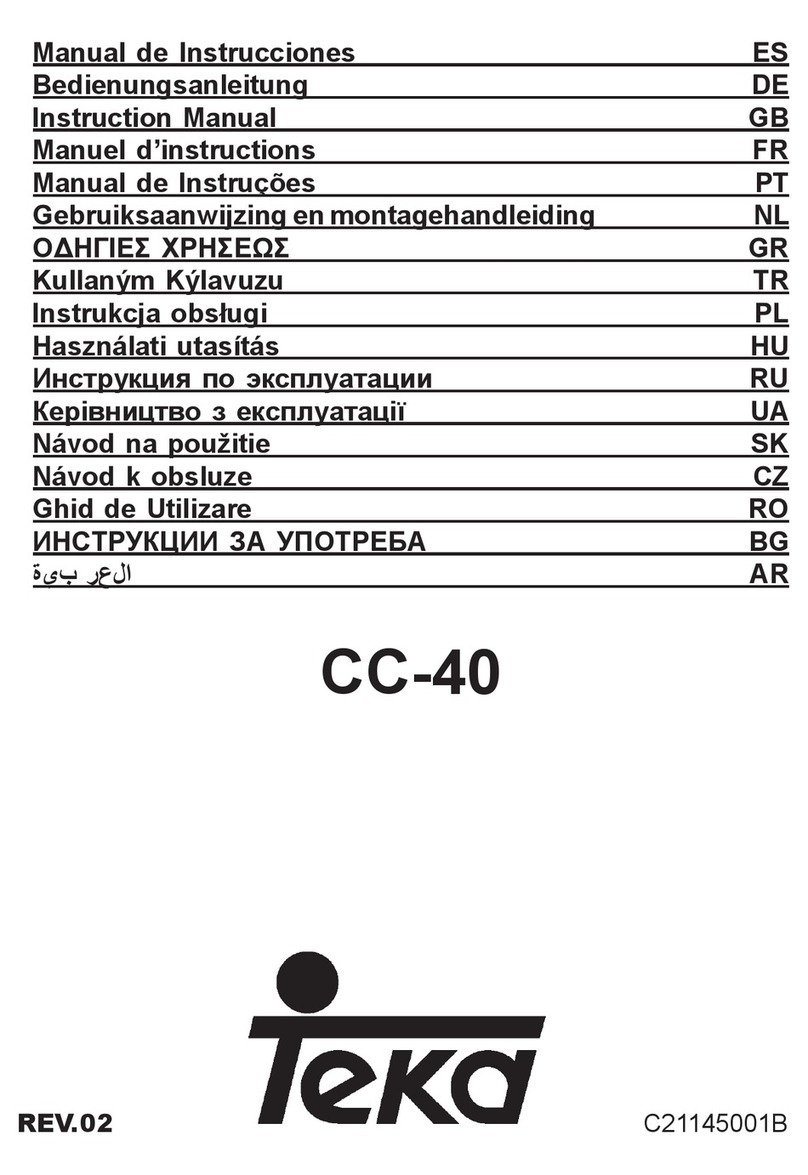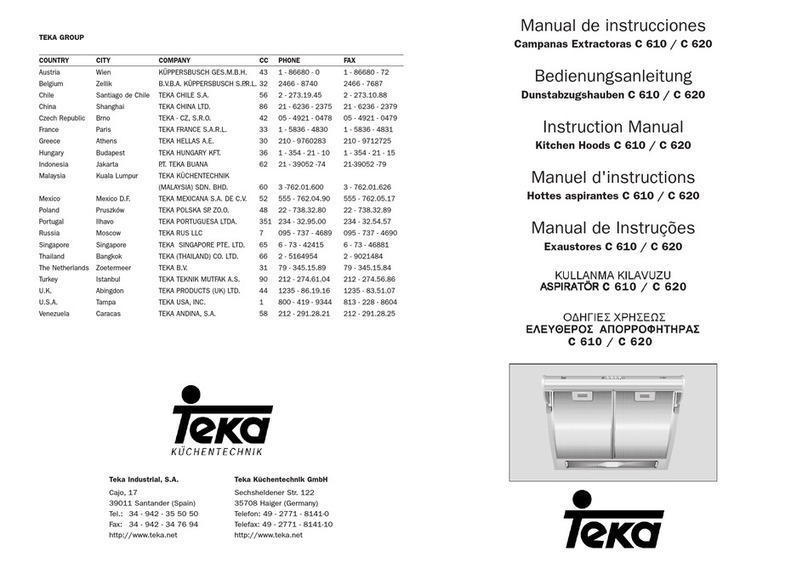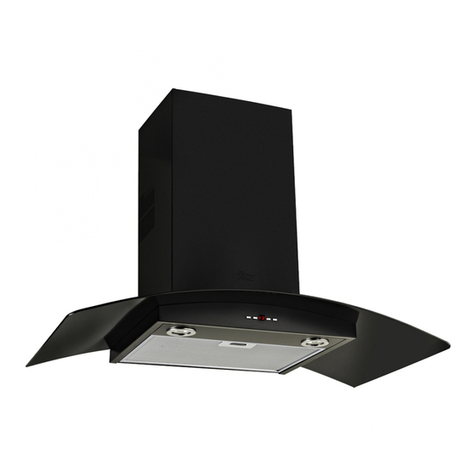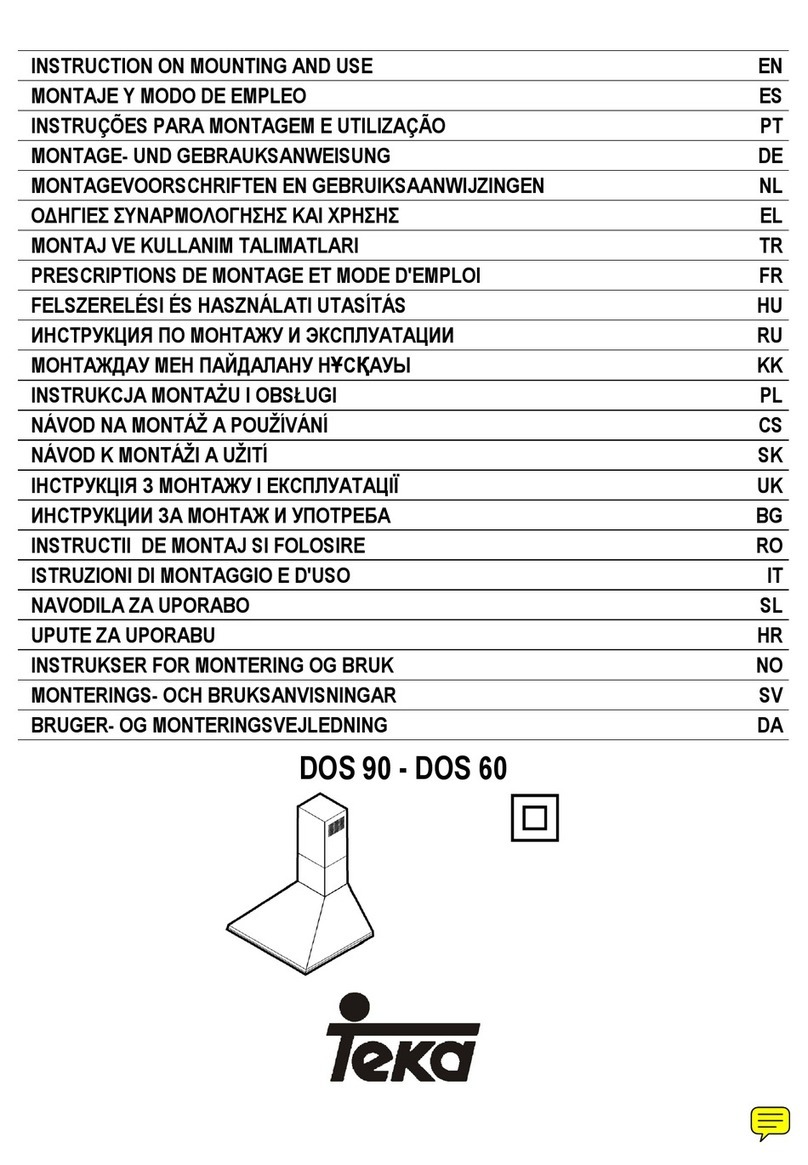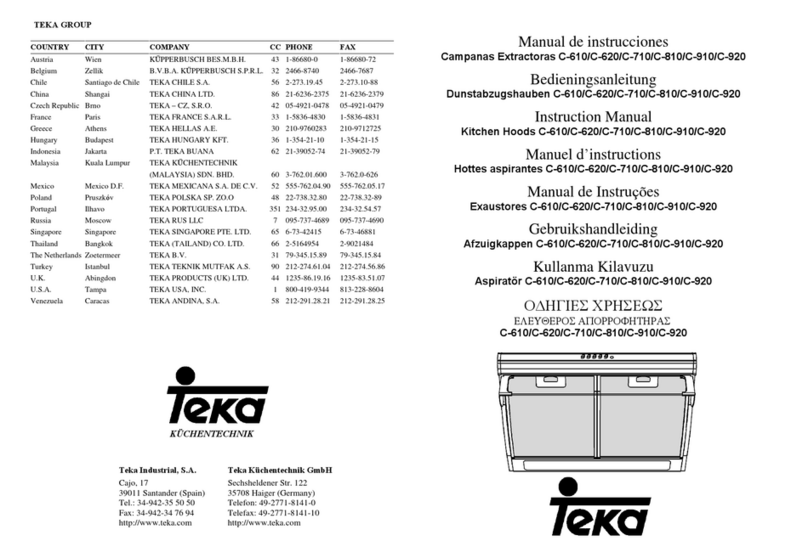Pulsando el mando que indica la figura 1
podrá controlar las funciones de la campana
Para conseguir una mejor aspiración le
recomendamos poner en funcionamiento la
campana unos minutos antes de cocinar
(entre 3 y 5 minutos) para que el flujo de aire
sea continuo y estable al momento de aspirar
los humos.
De igual modo, mantenga la campana
funcionando unos minutos después de
cocinar para el total arrastre de humos y
olores al exterior.
1- Temporizador
2- Disminución de la función elegida
3- Display
4- Aumento de la función elegida
5- Luz
Programación tiempo de aspiración
1) Encienda la campana y elija la velocidad de
aspiración deseada.
2)
3) Escoja el tiempo de programación deseado
-
en 1 minuto (Min. = 1 min., máx. = 99 min.).
4) Se visualiza el tiempo programado restante.
sólo manualmente y pasará a velocidad 2
transcurridos 7 min.
Cuando el indicador de saturación de
filtros se encienda, proceda a la limpieza
de los mismos.
-
segundos y el indicador se apagará.
Antes de efectuar cualquier operación de
limpieza y mantenimiento, asegúrese que el
aparato está desconectado de la red.
Para realizar labores de limpieza y
mantenimiento, cumpla con las Instrucciones
de Seguridad.
Existe riesgo de incendio en caso de que la
limpieza no se efectúe conforme a las
instrucciones.
Limpieza del filtro
Para extraer los filtros de sus alojamientos
actúe sobre los dispositivos de enclavamiento.
Proceda a su limpieza, bien introduciéndolo en
el lavavajillas, (ver observaciones) o dejándolo
sumergido en agua caliente el tiempo
necesario para facilitar la eliminación de
grasas, o si lo desea, mediante el uso de
sprays específicos (protegiendo las partes no
metálicas). Finalizada la limpieza proceda a su
secado.
Atención: la campana no funcionará hasta
que se vuelva a instalar el filtro principal.
Observaciones: La limpieza en lavavajillas con
detergentes agresivos, puede ennegrecer la
superficie metálica sin que afecte a su
capacidad de retención de grasas.
Atención: La limpieza de filtros debe
efectuarse, como mínimo una vez al mes,
dependiendo de la utilización de la campana.
Se debe tener en cuenta que al cocinar hay
deposición de grasas en la campana y en el
filtro aunque aquella no se ponga en
funcionamiento.
